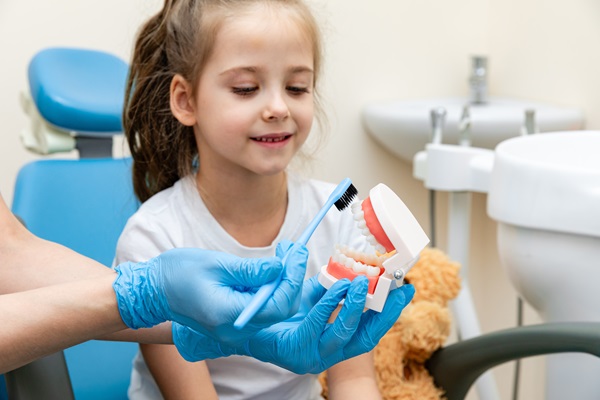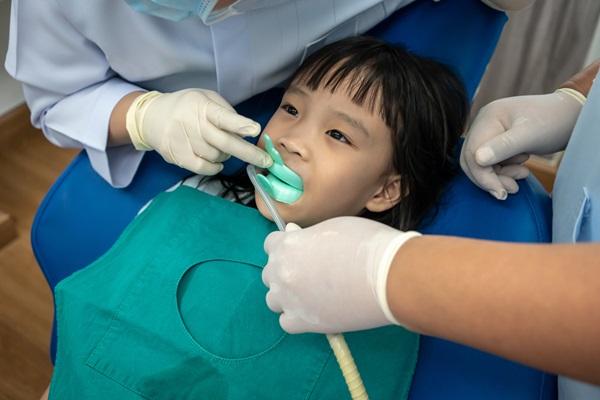What Parents Should Know About Cavity Treatment for Kids

Cavity treatment for kids is important to maintain your child’s dental health. Regular checkups with your pediatric dentist can provide this restoration early in the cavity’s development. This can prevent the damage from progressing. Knowing more about this treatment can help parents and kids prepare for the appointment. Here are the details that parents like you must know about cavity treatment for kids.
Pulpotomy
This procedure restores a child’s infected teeth. It is much like a root canal, but in this treatment, the dentist removes a small part of the pulp. The dentist will create an opening through the top of the tooth with a drill. This will allow the dentist to remove the infected pulp. Packing medication into the chamber will come next. A custom crown will cover the tooth if necessary.
Dental extraction
This is for teeth that suffer from severe decay. If the cavities are too deep to correct with dental restorations, the dentist will recommend this cavity treatment for kids. If it is a baby tooth, there should be a space maintainer after removing the tooth. This dental appliance will take the place of the baby tooth in guiding the permanent tooth’s eruption. Placing a space maintainer in the dental space can prevent dental shifting, crowding, and misalignment. It can also prevent eating and speaking problems later on.
Dental fillings
A filling is a common solution for cavities. Cavity treatment for kids uses dental materials that can fill the cavities and keep them from worsening. The dentist will give the area a local anesthetic. This will make the treatment painless.
Cleaning the tooth and drilling out the decayed areas will follow. The dentist will roughen, rinse, and dry the surface. Matching the color of the fillings with the color of the patient’s natural teeth will follow. The dentist will then apply the filling. Hardening the filling with a curing light will follow. Polishing the area will come next.
Dental crowns
The dentist will suggest a stainless-steel crown for kids if the tooth has a huge cavity and may fall out prematurely. This restoration can hold the tooth together. The tooth can then last until the permanent tooth erupts. The stainless-steel dental crown can also protect the tooth against strong bite forces.
Silver diamine fluoride
Some children may not take invasive treatments for cavities. That is why the dentist must detect the early stages of cavities. The dentist might suggest silver diamine fluoride, which is a topical cavity treatment for kids that kills decay-causing bacteria. It also strengthens the tooth enamel. This slows down the worsening of cavities. Applying silver diamine fluoride is a temporary solution for baby teeth that will fall out later on.
Silver diamine fluoride is FDA-approved. It is an antibacterial liquid that the dentist applies in a clinical setting. This cavity treatment for kids aims to control the current cavity formation and prevent its worsening. Fluoride and silver are the main components of this treatment. Fluoride stops and prevents decay. Silver kills bacteria and strengthens the dentin.
The pediatric dentist will clean and rinse the child’s teeth. Drying and removing debris will follow. Applying silver diamine fluoride with a micro brush will come next. The dentist will cure the application for about two minutes. The child must not drink or eat for at least one hour. This will allow the coating to harden.
The importance of treating cavities in children
Untreated tooth decay can result in more dental issues. It can lead to possible infections and dental pain. It can even cause a dental abscess. Chronic tooth decay can even lead to tooth loss at an early age. This can then lead to speech problems, digestion issues, and severe dental alignment problems. A dentist’s suggested cavity treatment for kids can help children avoid unnecessary and serious dental problems.
Using sedation dentistry may be necessary
Children will need sedation dentistry for invasive cavity treatment. It can also prevent negative experiences with the dentist. The dentist can discuss different types of sedation dentistry. The parent can choose which will be ideal for the child. Here are sedation dentistry options to consider:
- General anesthesia allows the child to stay asleep throughout the procedure. This type of sedation dentistry comes with risks. Even so, keeping the child from experiencing physical and emotional pain will be enough reason to take those risks. Tooth decay can be devastating to the child’s dental and general health. It can lead to consequences such as dental infection. Going through general anesthesia to stop tooth decay in its tracks can give the child a good start in life.
- Nitrous oxide or laughing gas can relax patients without making them sleep. The dentist will give it through a breathing mask. This type of sedation dentistry is not harmful.
Cavity treatment for kids can give your child’s health a boost
Seeing the dentist for regular checkups must start at an early age. This can result in early cavity treatment for kids. You can also get tips on how to prevent cavities even before the child’s first tooth emerges. Working with your dentist can give your child’s health a good start.
Request an appointment here: https://nettsmiles.com or call Nett Pediatric Dentistry & Orthodontics at (623) 759-7658 for an appointment in our Phoenix office.
Check out what others are saying about our services on Yelp: Read our Yelp reviews.
Recent Posts
Wondering what a dentist for kids recommends for preventing cavities? Read on to learn more. Parents often have problems getting their kids to practice good oral hygiene. Children’s affinity for sugary treats can make them develop cavities, which can be painful. They can also be susceptible to other dental problems. You can talk to a…
Cavity treatment for kids is a chief concern among parents, and for a good reason. Cavities are common in children of all ages. According to the Centers for Disease Control and Prevention, over half of the kids ages 6 to 8 have had at least one cavity in a primary tooth. The good news is…
Pediatric dentistry focuses on the oral problems that occur in children. Many dental issues in kids are similar to those that occur in adults. Without proper treatment, dental problems can progress to misaligned teeth and poor oral health. If you want to maintain your child’s dental health, here are the common dental issues that pediatric…
In their early years, your youngster is still a novice in brushing and flossing their teeth, meaning that cleaning your child's teeth in that period is your responsibility. Cleaning the teeth is a skill that the child should learn. Your role is to educate your youngster on how to keep their mouths clean and healthy.…


